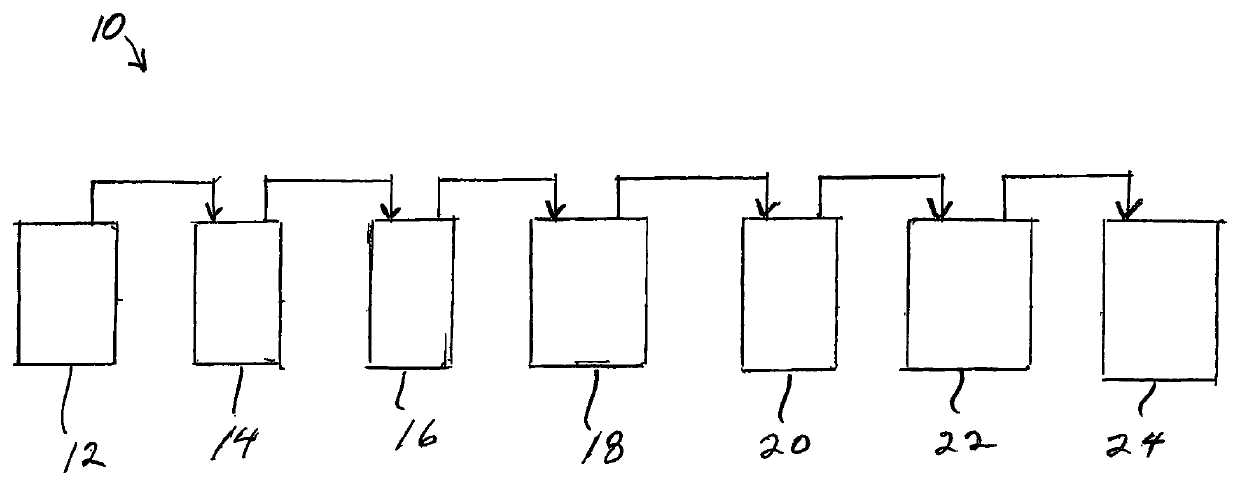Process to produce safe pasteurized shrimp and other shellfish of high sensory quality and extended refrigerated shelf-life
a technology of applied in the field of system and method for producing packaged shellfish, can solve the problems of increasing food safety risks in any way, unable to heat, and pasteurized shrimp and other shellfish products of acceptable market quality, so as to eliminate the time and facilities required for thawing and optimize heat transfer rate. , the effect of high quality
- Summary
- Abstract
- Description
- Claims
- Application Information
AI Technical Summary
Benefits of technology
Problems solved by technology
Method used
Image
Examples
example
[0064]The following is one example of the process for producing a packaged shrimp that is stable at refrigerated temperatures.
1. Frozen raw shrimp that was pretreated with water retention additives, such as sodium tripolyphosphate, prior to freezing was thawed.
[0065]2. The thawed shrimp was cooked in a highly perforated basket in an agitated hot brine (1.65 percent NaCl) at 187° F. Cooking continues until the internal shrimp temperature reaches 186.5° F. as determined by internal probes or by previous study, approximately 6.5 minutes for 41 / 50 count shrimp.
3. Immediately cool the shrimp by immersing in an agitated brine bath (1.65 percent NaCl) chilled mechanically or with ice.
4. Rinse the cooked shrimp twice by immersing in 1.65 percent brine solutions to remove fine proteinaceous particulates from shrimp surface.
5. Pack the cooked shrimp in King Plastics 40106 clear, flat plastic cans to 6 ounce net weight, arranging shrimp in the cans for optimal visual consumer appeal.
6. Fill th...
PUM
 Login to View More
Login to View More Abstract
Description
Claims
Application Information
 Login to View More
Login to View More - R&D Engineer
- R&D Manager
- IP Professional
- Industry Leading Data Capabilities
- Powerful AI technology
- Patent DNA Extraction
Browse by: Latest US Patents, China's latest patents, Technical Efficacy Thesaurus, Application Domain, Technology Topic, Popular Technical Reports.
© 2024 PatSnap. All rights reserved.Legal|Privacy policy|Modern Slavery Act Transparency Statement|Sitemap|About US| Contact US: help@patsnap.com








